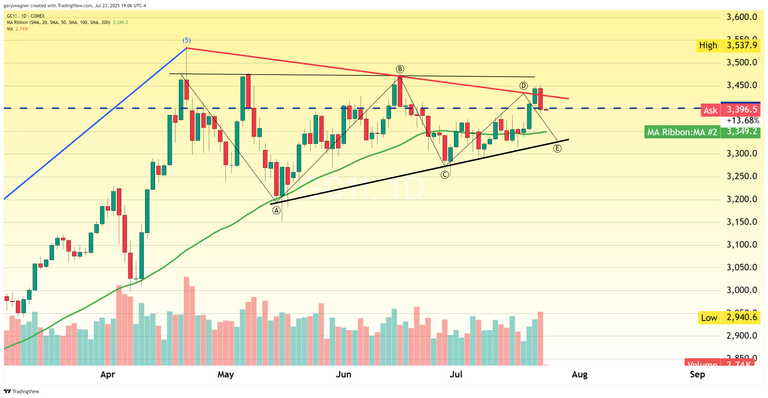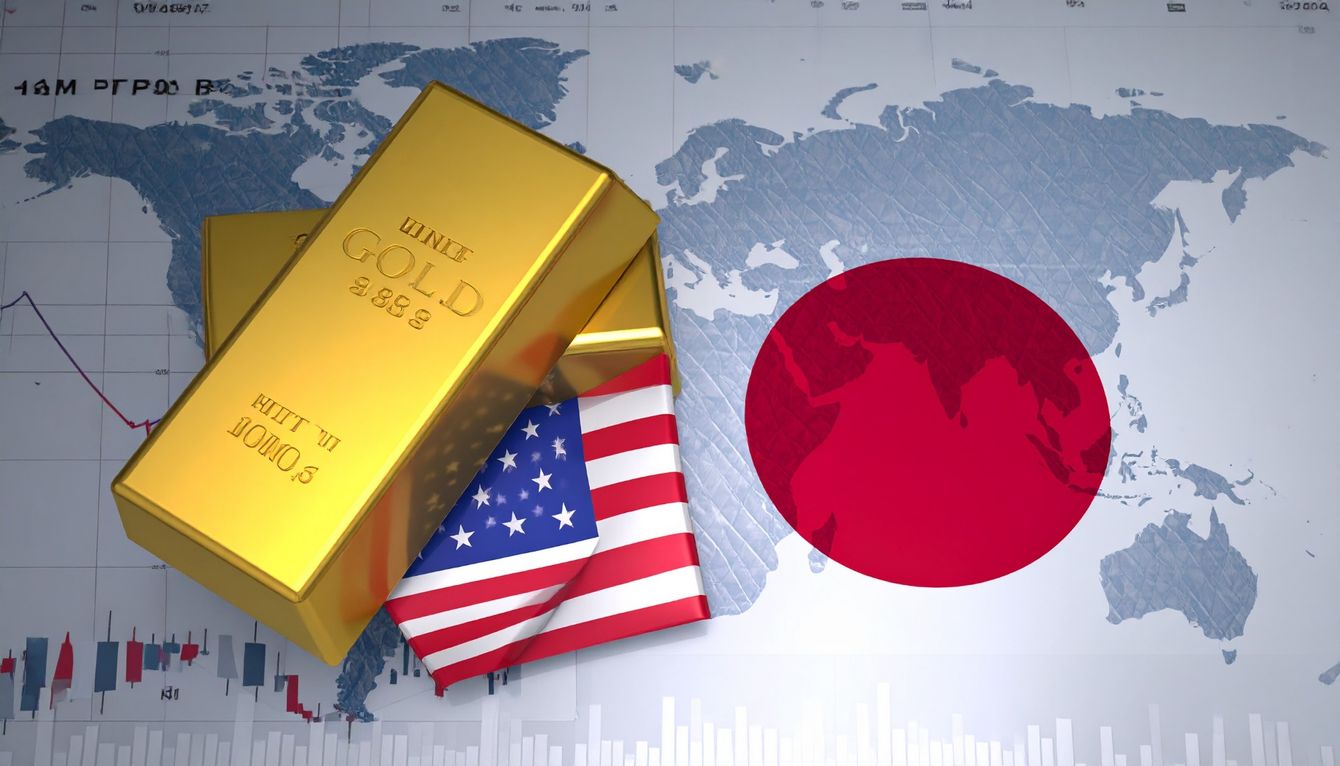Gold prices experienced a notable decline today following news of a breakthrough trade agreement between the United States and Japan, which has renewed investor confidence about potential resolutions to ongoing trade tensions with other major partners ahead of the critical August 1st deadline.
The newly announced US-Japan trade deal represents a significant de-escalation from previously threatened measures, with the agreement imposing 15% tariffs on US imports from Japan—substantially lower than the 25% rate that was scheduled to take effect on August 1st. The comprehensive agreement extends beyond tariff adjustments to include substantial economic commitments from Japan, featuring a $550 billion investment fund dedicated to US-based projects.
Additional provisions of the accord demonstrate Japan's commitment to strengthening bilateral economic ties. The agreement includes Japan's purchase of 100 Boeing aircraft, a 75% increase in US rice purchases, and $8 billion in other agricultural product acquisitions. Defense spending with American firms will also see significant growth, rising from the current $14 billion to $17 billion annually.
Broader Trade Landscape Remains Uncertain
While the US-Japan agreement provides encouraging signals for market participants, significant challenges remain with other major trading partners. The European Union continues to present the most pressing concern, having already prepared retaliatory measures should negotiations fail and a 30% tariff be imposed. However, emerging indications suggest that a similar trade framework to the Japanese agreement may be under consideration for EU negotiations.
The immediate market response to the trade announcement produced complex currency movements. The dollar initially strengthened following reports of the US-Japan agreement, but subsequent developments created headwinds for the greenback. Improved prospects for a potential EU trade deal boosted the euro and applied downward pressure on the dollar. Additional weakness emerged after US existing home sales data disappointed, falling to a nine-month low and exceeding analyst expectations for decline.
These combined factors resulted in the dollar trading down 0.19% at 97.21, marking the fourth consecutive session of declines. Despite this dollar weakness, which typically supports gold prices, the precious metal failed to benefit from the currency's retreat.
The decline in safe-haven demand prompted gold to surrender all of yesterday's gains while extending losses further. As of 5:00 PM ET, gold futures were trading down $43.50, or 1.26%, at $3,400.20. This decline pushed prices below the significant 23% Fibonacci retracement level at approximately $3,410, calculated from the April 7th low near $3,000 to the all-time intraday high above $3,500.

Technical analysis reveals several key support levels that may influence future price action. The immediate support zone emerges at $3,375, a price point that has served as both resistance and support in recent months. Below this level, the 50-day simple moving average provides additional support just under $3,350. More substantial technical support appears at the 38% Fibonacci retracement level of $3,331.80.
Silver Demonstrates Relative Strength
In contrast to gold's weakness, silver displayed considerably more resilience, benefiting from its industrial demand component. Silver futures established a new 12-year high just under the $40 threshold, reaching $39.91 on Comex before settling slightly lower. The industrial metal closed the session down a modest $0.05 at $39.50, demonstrating the divergent performance between the two precious metals amid changing market dynamics.
For those that would like more information about our services click here
Wishing you as always good trading,

